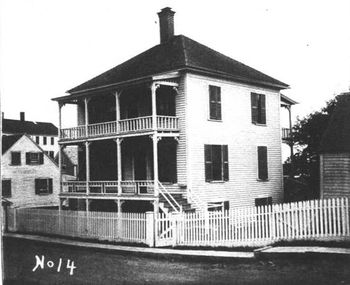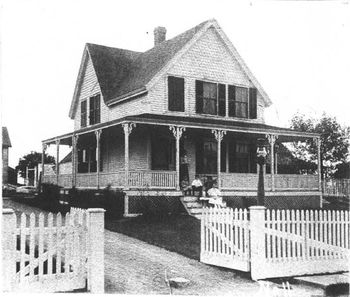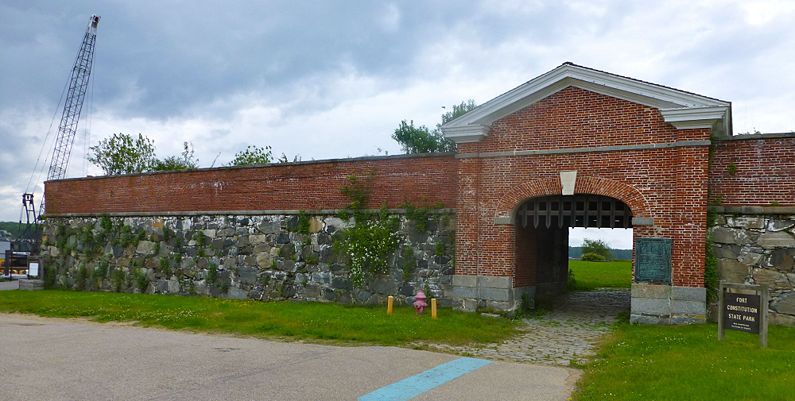Fort Constitution (2)
|
Fort Constitution (2) (1791-1948) - A First System Coastal Fort established on the site of previous fortifications. Site purchased in 1791 on New Castle Island, Rockingham County, New Hampshire. Originally established and fortified in 1631 and known as "The Castle", later as Fort William and Mary and after the Revolutionary War as Fort Castle or Castle Fort. Known as Fort Constitution from about 1802, officially named Fort Constitution in G.O. 6, 1937. Abandoned in 1948.
Early History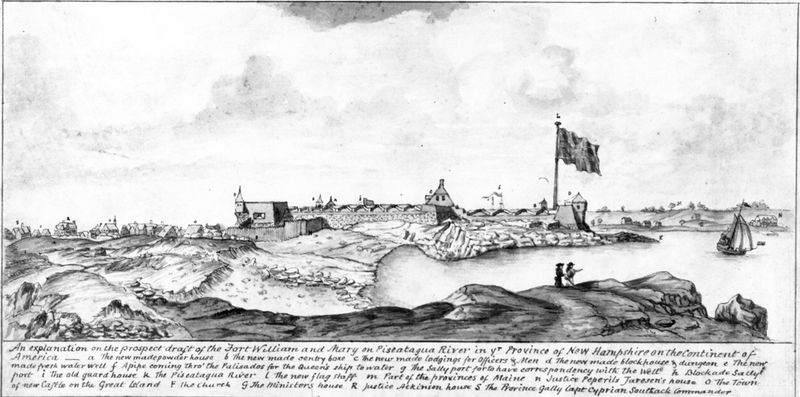 Part of the Harbor Defense of Portsmouth, New Hampshire. Fortifications on Fort Point on Great Island began in 1631 and were known as "The Castle", mounting four guns in an earthen redoubt. In 1692 the fortification was named Fort William and Mary and further fortified with a breastwork of 19 guns during King William's War. Stone walls, elevated gun platforms, and a blockhouse are constructed by 1705. The fort was garrisoned during the colonial era with a small number of men (4-5) supplement by others as needed.
Revolutionary War (1775–1783)At the outset of the Revolutionary War the British garrison at the fort, under British Captain John Cochran, was overcome by 400 members of the "Sons of Liberty" in two raids on 15-16 Dec 1774. Captain John Langdon and Major John Sullivan led the attack, captured the fort and removed the guns and stores. The Patriot raids netted 16 cannons and 97 barrels of gunpowder but the arrival of a British warship with Royal Marines on board halted the attacks. The British held the fort until they departed in August 1775. After the British departure, the fort served intermittently as a signal station and lighthouse for the duration of the war. First System (1794-1808)The First System fortifications were initially established on the site of the previous fortifications on 3.35 acres of land acquired from the State of New Hampshire in 1791 and 1807. The U.S. Army took control of the site in 1794. The existing Castle Fort or Fort Castle was refurbished and garrisoned with an artillery company. Second System (1808-1816)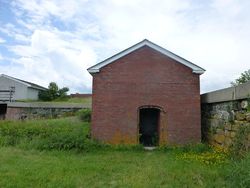 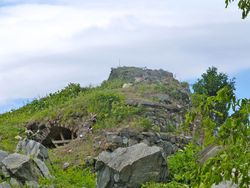 The fort was renamed Fort Constitution and reconstructed as a Second System fort with higher walls and brick buildings. This upgrade was completed in 1808. During the War of 1812 a casemated Martello tower (known as Walbach Tower, or Castle Walbach) was built with a 32-pounder on the top and three casemated field guns in the casemates. The 32-pounder could fire on ships in the channels and the casemated guns could protect the land side approaches. The tower was named for the then second-in-command of New England seacoast defenses, Colonel John de Barth Walbach who was also in charge of the Portsmouth defense..
U.S. Civil War (1861-1865)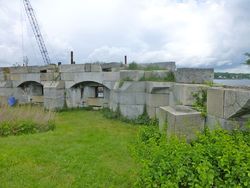 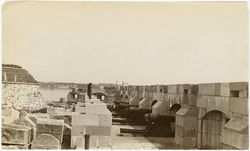 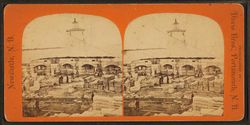 During the U.S. Civil War construction was begun on a massive three-tiered Third System casemated fort. Advances in rifled armament during the U.S. Civil War made the Third System forts obsolete overnight and the upgrade of Fort Constitution was never completed. During the first year of the war, the fort was armed with only 25 pieces of ordnance. After 1867 the fort was placed in caretaker status and remained that way until construction began on the Endicott Period gun batteries in 1897.
Endicott Period (1890-1910)Construction on the two Endicott Period gun batteries slated for Fort Constitution began in 1897 and was completed in 1904. These batteries were separate from the old fort walls and each was self-contained with gun emplacements and magazines protected by reinforced concrete. A mining casemate was built into the left flank of the unnamed 8-inch gun battery in 1901. An additional purchase of 8.75 acres of land in 1902 expanded the post to 11.4 acres. The 7 Dec 1903 Report of Completed Batteries shows the post garrisoned and the 8-inch gun battery completed, but unnamed. The report also shows four, 100-pounder Parrott guns still mounted in the old casemated fort.
World War I (1917-1918)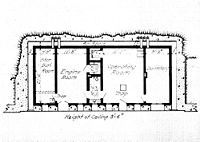 The 8" guns of [[Battery Farnsworth were removed in 1917 for service abroad. The war ended before they could be shipped to the front but they were not returned or replaced in Battery Farnsworth, it remained unarmed. In 1920 an earth covered mine casemate was built on the rear left flank of Battery Farnsworth to control the minefields formerly controlled by Fort Stark. The casemate was accepted for service 28 Dec 1920 at a cost of $ 31,415.23.
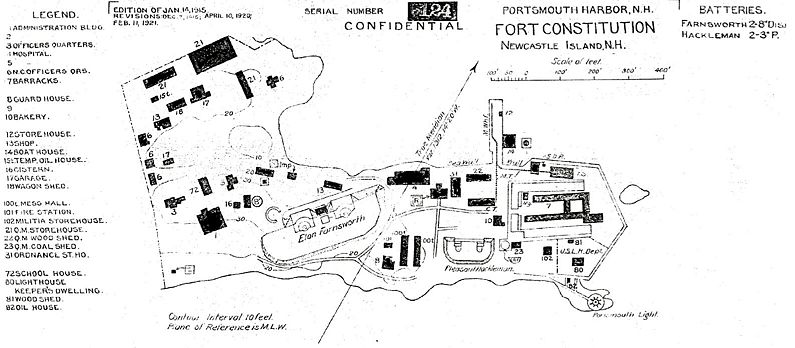
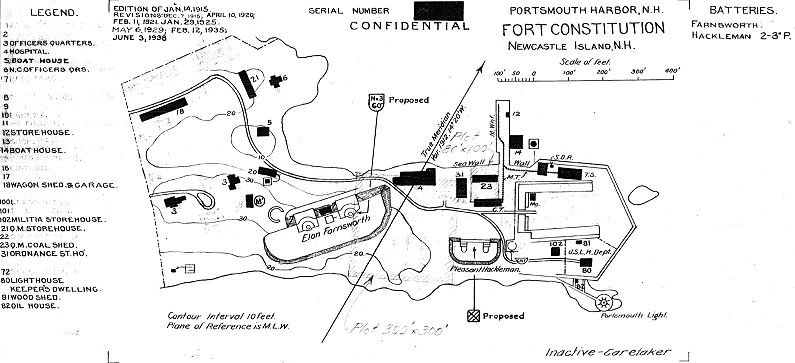
World War II (1941-1945)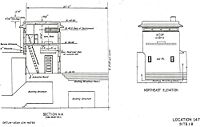 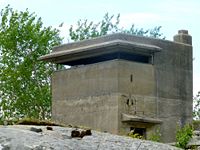 In 1942 the 3 inch guns and mounts of Battery Hackleman (1) were shipped to Battery Hackleman (2) at Fort H.G. Wright and they were replaced by 3 inch guns and mounts from Battery Hays at Fort Stark. Battery Hackleman (1), the last remaining gun battery on Fort Constitution was deactivated in 1945. A reinforce concrete mine observation station (M1) was built on top of Battery Farnsworth and accepted for service 13 March 1943 at a cost of $ 4,061. During World War II Portsmouth Harbor was protected by a series of underwater defenses that included controlled underwater mines, underwater hydrophones, underwater magnetic loop detectors and an underwater anti-torpedo boat nets across the harbor channel. Many of the defenses of Portsmouth were focused on protecting the minefields from small fast minesweepers and motor torpedo boats. The mine field defenses included three 3" gun batteries, two 90mm AMTB batteries and four portable searchlights. The Portsmouth Harbor Mine Fields were made up of fourteen groups of 19 mines each. The mine casemate #2 at Fort Foster controlled mine groups 1 to 7 while mine casemate #1 at Fort Constitution controlled mine groups 8 to 14. The hydrophones and magnetic loop detectors were positioned in front of the mine groups to detect approaching ships. Ship tracks were plotted in the plotting room in mine casemate #1. Control of the minefields came from the two mine casemates under a group command. Arming and firing the mines was done in the respective mine casemates. Most of the mine support structure was located at Fort Constitution except for the explosive storage facility at Fort Dearborn. Emergency construction before the start of the war in 1941 raised the personnel capacity of Fort Constitution from 2 officers and 54 enlisted personnel to 16 officers and 243 enlisted personnel. Three 63 man barracks and a mess hall were built within the confines of the old fort. An officers BOQ and mess were built at the western edge of the reservation along with a recreation building and a Post Exchange (PX). The new buildings and the existing buildings along with the two gun batteries left little empty space on the 10-acre post.
Cold War (1947-1991)The fort was declared surplus in 1948 and part of it was turned over to the U.S. Coast Guard. The remainder of the site became a New Hampshire State Historic Site in 1961 and was placed on the National Register of Historic Places on 2 Jul 1973. Current StatusPart of Fort Constitution State Historic Site, New Castle Island, Rockingham County, New Hampshire. Battery Hackleman (1) was destroyed and a Coast Guard building sits on the site. Battery Farnsworth is still intact but not open to the public. No period guns or carriages in place.
See Also: Sources:
Links:
Visited: 7 Jun 2012
| ||||||||||||||||||||||||||||||||||
- Visited
- All
- New Hampshire All
- New Hampshire Forts
- New Hampshire Rockingham County
- Coastal Forts
- Harbor Defense of Portsmouth
- Fort Constitution (2)
- First System Forts
- Second System Forts
- U.S. Civil War Forts
- Endicott Period Forts
- World War I Forts
- World War I Coastal Forts
- World War II Forts
- World War II Coastal Forts
- Starter Page
- Martello Towers
- 2012 Research Trip
